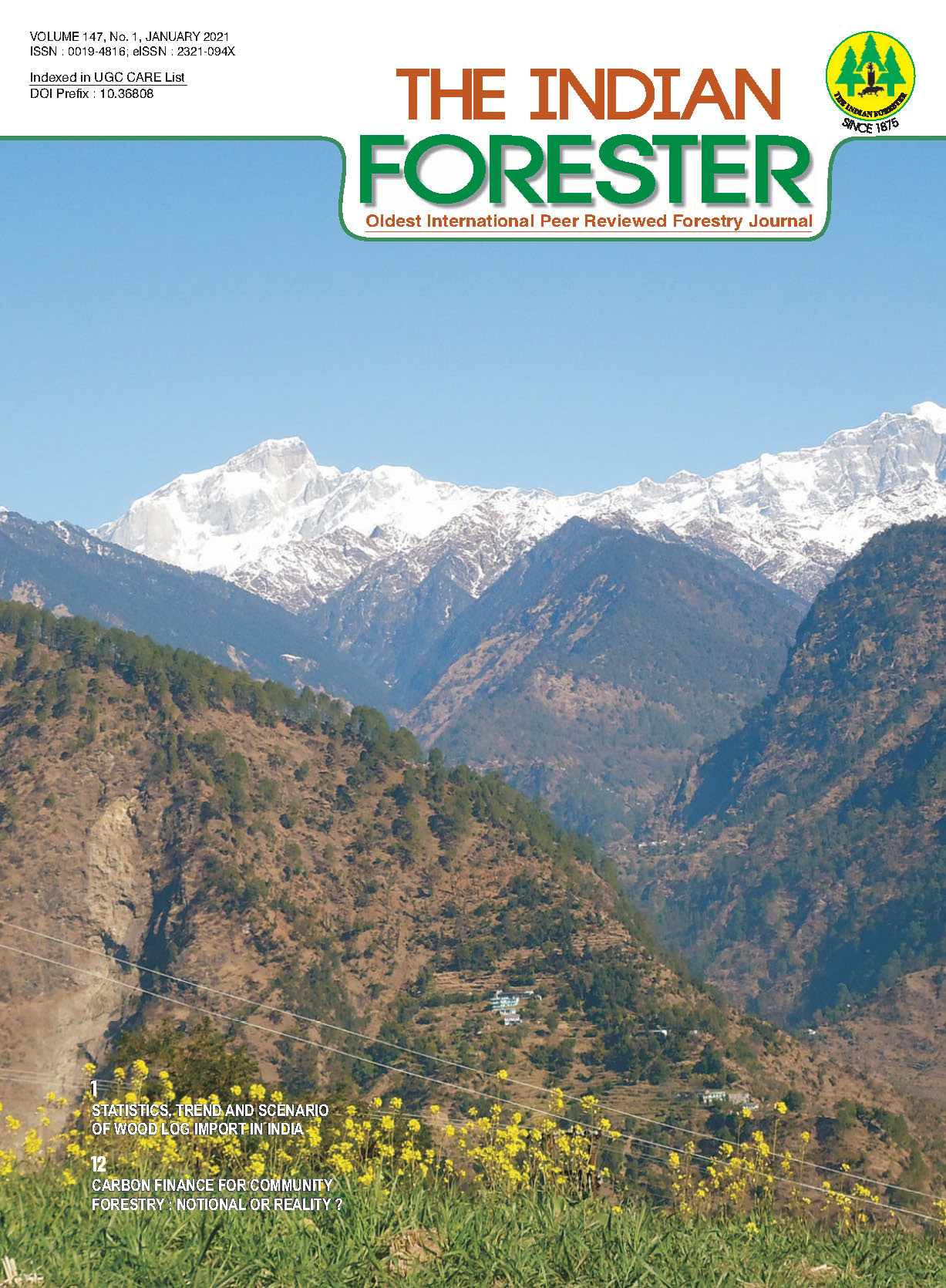An Analysis of Institutional Support Structures for Livelihood Promotion in Fringe Villages of Kaziranga Tiger Reserve, Assam
DOI:
https://doi.org/10.36808/if/2021/v147i1/155018Keywords:
Sustainable Livelihood Approach, Kaziranga Tiger Reserve, Human capital, Social capital, People Park Interface.Abstract
This paper examines the sociological and institutional factors responsible for the status of livelihood interventions in the fringe villages of KTR. The study concludes that human and social capital building and addressing the vulnerability context such as impacts of floods and poverty alleviation are important for the success of income generating activities in KTR. It is recommended to have detailed discussions and coordination among institutional players like Government departments, NGOs and social institutions, and an in-depth understanding of past interventions while making decisions about current and future plans.References
Baruah M. and Sharma P. (1999). Birds of Kaziranga National Park, India. Forktail, (15): 47-49.
Bohikhowa Gaon EDC (2016). Bohikhowa Gaon Ecodevelopment Committee, pp. 17-23.
Borah B., Borgohain A., Khuman L.S., Bordoloi G., Dewri R., Kalita M and Dutta K. (2018a). Socio-economic conditions of the fringe villagers of Kaziranga National Park, Assam, India. International Journal of Current Microbiology and Applied Sciences, 7(5): 2530-2531.
Borah B., Borgohain A., Khuman L.S., Bordoloi G., Sadananda P. and Konia T. (2018b). Perceived benefits by the fringe villagers of Kaziranga National Park in respect of animal husbandry. International Journal of Educational Science and Research, 8(2): 2-5.
Chambers R. and Conway G.R. (1991). Sustainable Rural Livelihoods: Practical Concepts for the 21st Century. IDS Discussion Paper, 296. Brighton: IDS.
Christen R.P., Srinivasan N. and Voorhies R. (2005) Managing to go down market: regulated financial institutions and the move into microsaving. In Madeline Hirschland (ed.) Savings Services for the Poor: An Operational Guide, Kumarian Press, Bloomfield, CT, p. 106.
Ellis S. and Talukdar B. (2019). Rhinoceros unicornis. The IUCN Red List of Threatened Species 2019.
Folke C., Elmqvist T., Holling C.S. and Walker B. (2002). Resilience and sustainable development: building adaptive capacity in a world of transformations. AMBIO: A Journal of the Human Environment, 31(5) : 437-440.
Gogoi J. and Bora B. (2014). Biodiversity Conservation and Sustainable Eco Tourism - Case Study of Kaziranga National Park, A World Heritage Site in Assam, India.
Gugerty M.K., Biscaye P. and Anderson C.L. (2019). Delivering development? Evidence on self-help groups as development intermediaries in South Asia and Africa. Development Policy Review. 37 (1) : 129-151.
Gurung D.J. and Goswami C. (2015). Developing linkage between Wildlife Tourism and Handicraft for Local Economic Development: A Case Study of Kaziranga National Park. pp. 1-5.
Hussain S., Barthwal S.C., Badola R., Rahman S.M.T., Rastogi A., Tuboi C. and Bhardwaj A.K. (2012). An analysis of livelihood linkages of tourism in Kaziranga National Park, a natural world heritage site in India. Parks, 18(2) : 34-35.
Islam M.J. and Nath T.K. (2014). Forest-based betel leaf and betel nut farming of the Khasia indigenous people in Bangladesh: approach to biodiversity conservation in Lawachara National Park (LNP). Journal of Forestry Research, 25(2) : 419-427.
Kuthori Baghmari Ecodevelopment Committee. (2016). Microplan of Kuthori Baghmari Ecodevelopment Committee. Kuthori Baghmari Ecodevelopment Committee, pp. 19-26.
Misra M. (2005). Improving protection and building capacity of staff at Kaziranga National Park. UNESCO-IUCN-WII, pp. 4-6.
Mohajan H.K. (2018). Qualitative research methodology in social sciences and related subjects. Journal of Economic Development, and People, 9(1) : 9.
Nyumba T.O., Wilson K., Derrick C.J. and Mukherjee N. (2018). The use of focus group discussion methodology: Insights from two decades of application in conservation. Methods in Ecology and Evolution, 9, p. 20.
Roche R. (2007). Livelihoods Approaches as a Conservation Tool. University of Rhode Island. p. 22.
Saikia J. (2013). The Role of Kaziranga National Park (The World Heritage Site) For the Development of Tourist Industry of Assam. International Journal of Chemical and Environmental Sciences, 3, p.12.
Scoones I. (2009). Livelihoods perspectives and rural development. Journal of Peasant Studies, 36(1).
Stebbins R.A. (2001). Exploratory Research in the Social Sciences: What is exploration? Sage Publications, Inc., p.3.
Walker B. and Salt D. (2006). Resilience Thinking. Sustaining Ecosystems and People in a Changing World. Washington, DC: Island Press, pp. 2-14.
WFP and IFAD (2006). Supporting Sustainable Livelihoods: Lessons from Five Case Studies. WFP &IFAD, pp. 21-33, 60-72.
Downloads
Downloads
Additional Files
Published
How to Cite
Issue
Section
License
Unless otherwise stated, copyright or similar rights in all materials presented on the site, including graphical images, are owned by Indian Forester.





